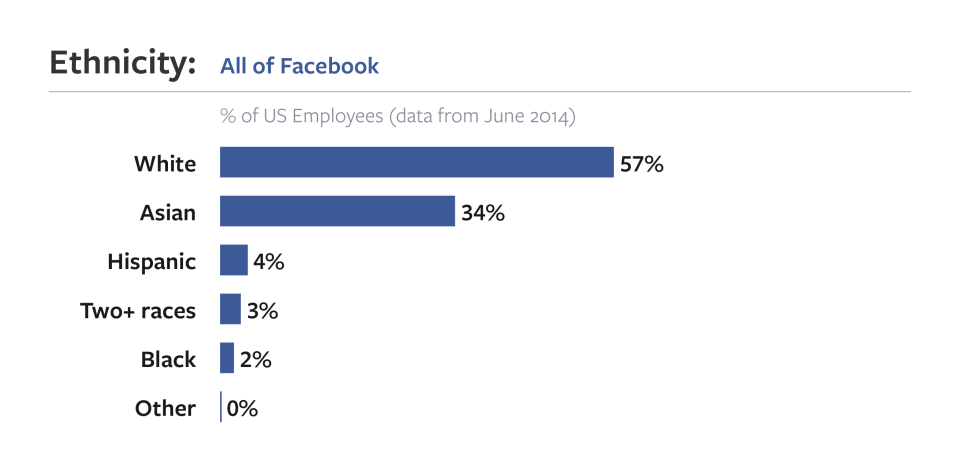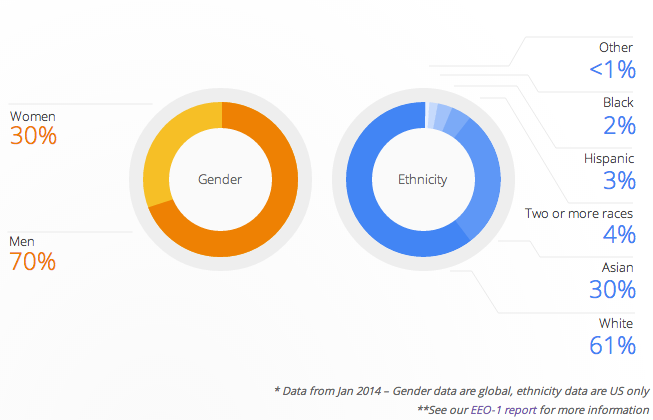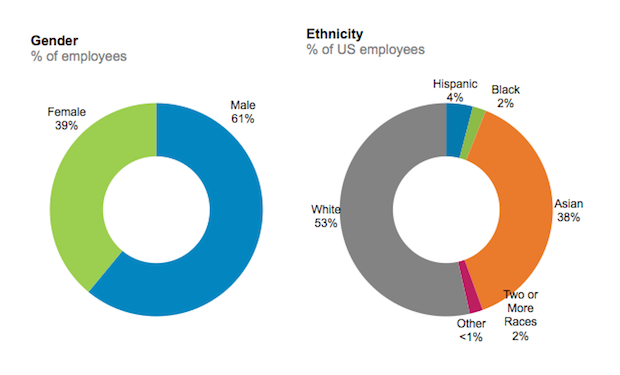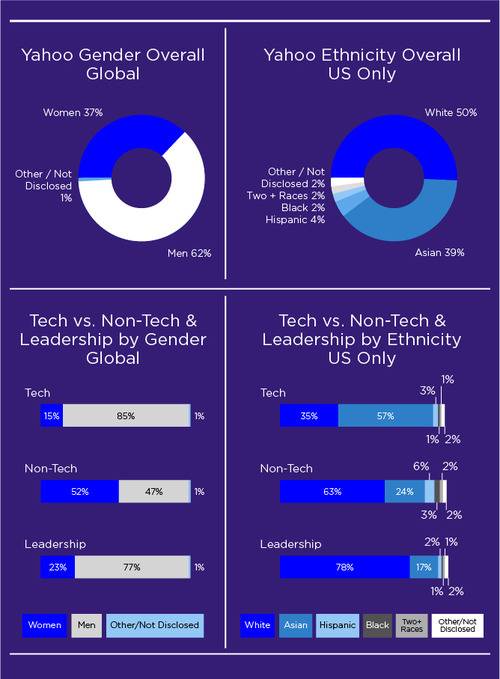If we’ve learned anything from the numbers tech companies like Google, Facebook and Yahoo have revealed about their workforce diversity over the last month, it’s that there clearly aren’t enough women and minorities working in technology.
As if we didn’t know that already.
The male-dominated tech culture has become a parody, with television shows like HBO’s Silicon Valley highlight the “brogrammer” culture portrayed by men in hoodies. On the other side of things, commercials like Verizon’s “Inspire Her Mind” earnestly focus on the importance of empowering young women to take up science and technology projects, instead of priming them to become lip gloss-wearing girly-girls.
In order to bring more diversity into the technological workforce, tech companies are releasing employee data that shows just how true-to-life these stereotypes can be. With any luck, the increased transparency will help change those numbers and encourage more women and minorities to pursue careers in technology.
Facebook is the latest technology corporation to release data on its workforce detailing gender and race information, following Google’s lead last month. Yahoo and LinkedIn have also released workplace diversity numbers.
Globally, many more men than women work in tech companies, and in the U.S., white employees vastly outnumber other minorities at work. The imbalances are even more striking in leadership positions. Let’s take a quick tour of what the companies have released so far.
Facebook COO Sheryl Sandberg is known for her outspoken Lean In campaign, encouraging women to strive for leadership within their companies while balancing their professional and private lives in a healthy, but successful, way. Of course, Sandberg has her critics, but her organization has empowered women to take control of their own careers.
Unfortunately at Facebook, women are still underrepresented, especially in senior positions.


Globally, Facebook is 69% men, and in the U.S., 57% white. Asians make up 34% of Facebook’s U.S. workforce, and Hispanics and blacks constitute four and two percent, respectively.
Now, about leaning in? Just 23% of senior-level positions across the globe are held by women. And almost three-fourths of senior-level positions in the U.S. are white.
To Facebook’s credit, the company is not pleased with these numbers.
“The challenge of finding qualified but underrepresented candidates is one that we’re addressing as part of a strategic effort across Facebook,” the company said in a blog post on Wednesday. It’s working with organizations like the Anita Borg Institute and the National Center for Women & Information Technology that aim to support women in technical careers, as well as college and educational programs that promote science, technology, engineering and mathematics for underrepresented students.
“We have a long way to go, but we’re absolutely committed to achieving greater diversity at Facebook and across the industry,” the company wrote in its blog post.
Google (Which Started It All)
Google was the first big tech company to release its diversity data, kicking off the transparency trend.
Google’s workforce is 70% men globally, and in technical roles, just 17% women. In the U.S., Google is 60% white, and two and three percent black and Hispanic, respectively.

Like other tech companies, these numbers reflect an unfortunate truth about the technological workforce. But Google is aiming to change that.
At this week’s Google I/O developer conference, the company welcomed more than 1,000 women—or 20% of attendees, up from just seven percent last year. It’s also pouring money and resources into partner organizations that focus on bringing more women and minorities into the workforce, and recently launched Made With Code to get young female students interested in programming.
Soon after Google released its diversity data, LinkedIn followed suit.

The company has a male majority, albeit one a bit smaller. Out of 5,400 employees worldwide, 61% are male, and in the U.S., 53% are white.
To help improve that white, male ratio, the company is working with a handful of women- and minority-focused organizations that provide opportunities for education and jobs in tech, as well as Out & Equal Workplace Advocates, a LGBT organization working to end sexual orientation-based employment discrimination.
Yahoo
Yahoo got on the diversity transparency train just days after LinkedIn, and noted that 62% of its global workforce is male, while 50% of its U.S. workforce is white.

Like other companies, tech roles are made up mostly by men, with just 15% of the jobs held by women. Similarly, the company led by CEO Marissa Mayer has just 23% of women in leadership positions.
Yahoo, like other companies, is working to change this imbalance, and provides resources for employees of diverse backgrounds, and also works with organizations like the Anita Borg Institute (which Facebook and Google also partner with) to promote equality in tech.
Let’s Hope There’s More To Come
These are arguably some of the most visible tech companies both in Silicon Valley and across the globe, and by releasing diversity data, they’re admitting that something needs to be done to bring more women and minorities into the workforce, and are personally taking charge of driving the change to come.
It’s an issue that impacts not just the companies who decide to make an effort to balance the gender and race ratio, but the industry itself. By being transparent about their shortcomings, Facebook, Google, LinkedIn, Yahoo, are poised to begin a sea change in technology that will—dare I say it?—disrupt the white, male industry.
Lead image by corinnepw on Flickr; other images courtesy of the respective companies










